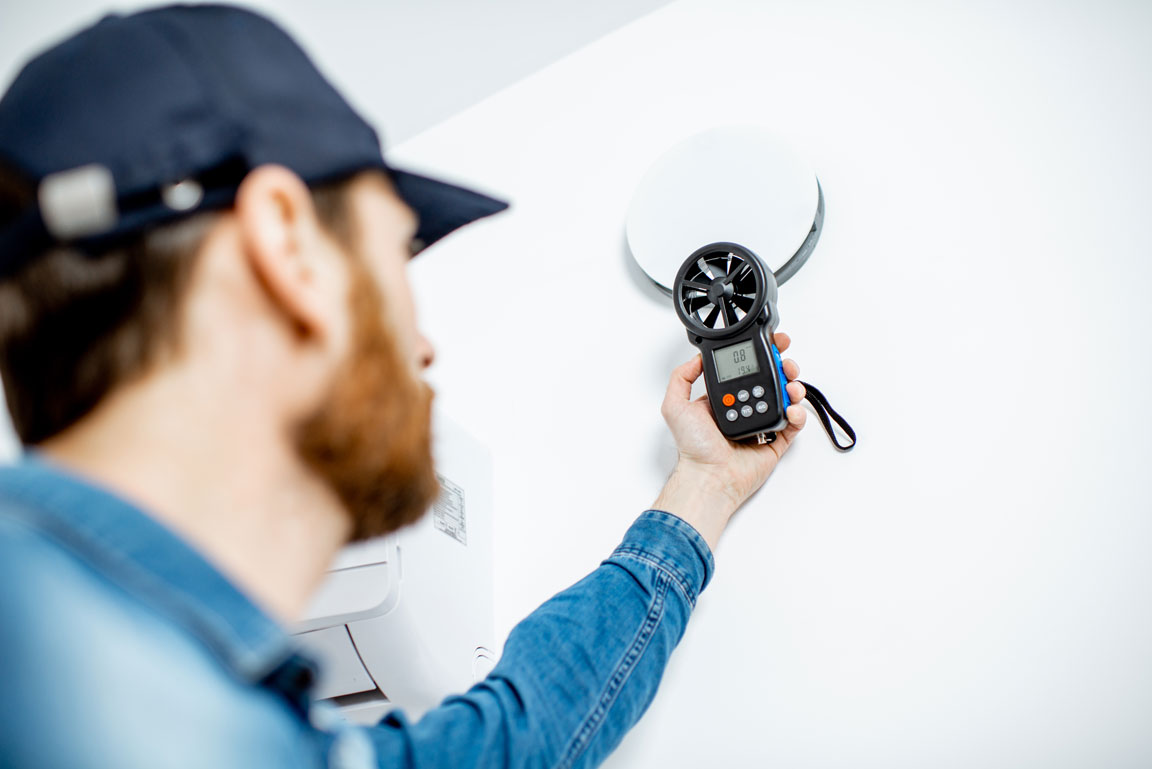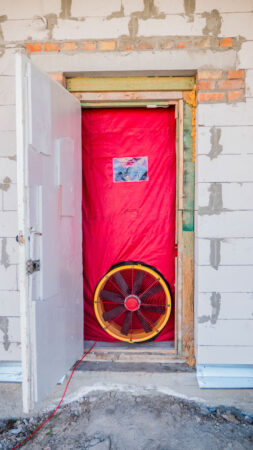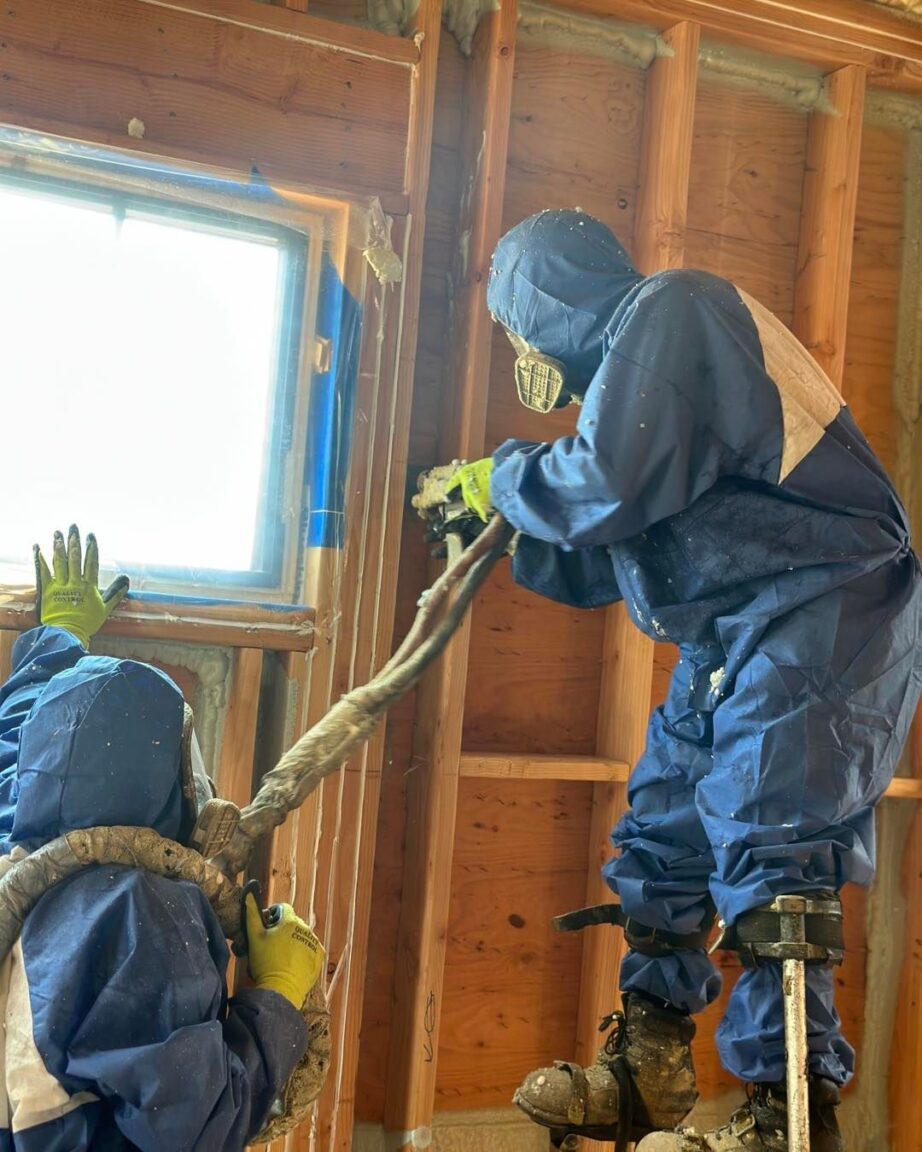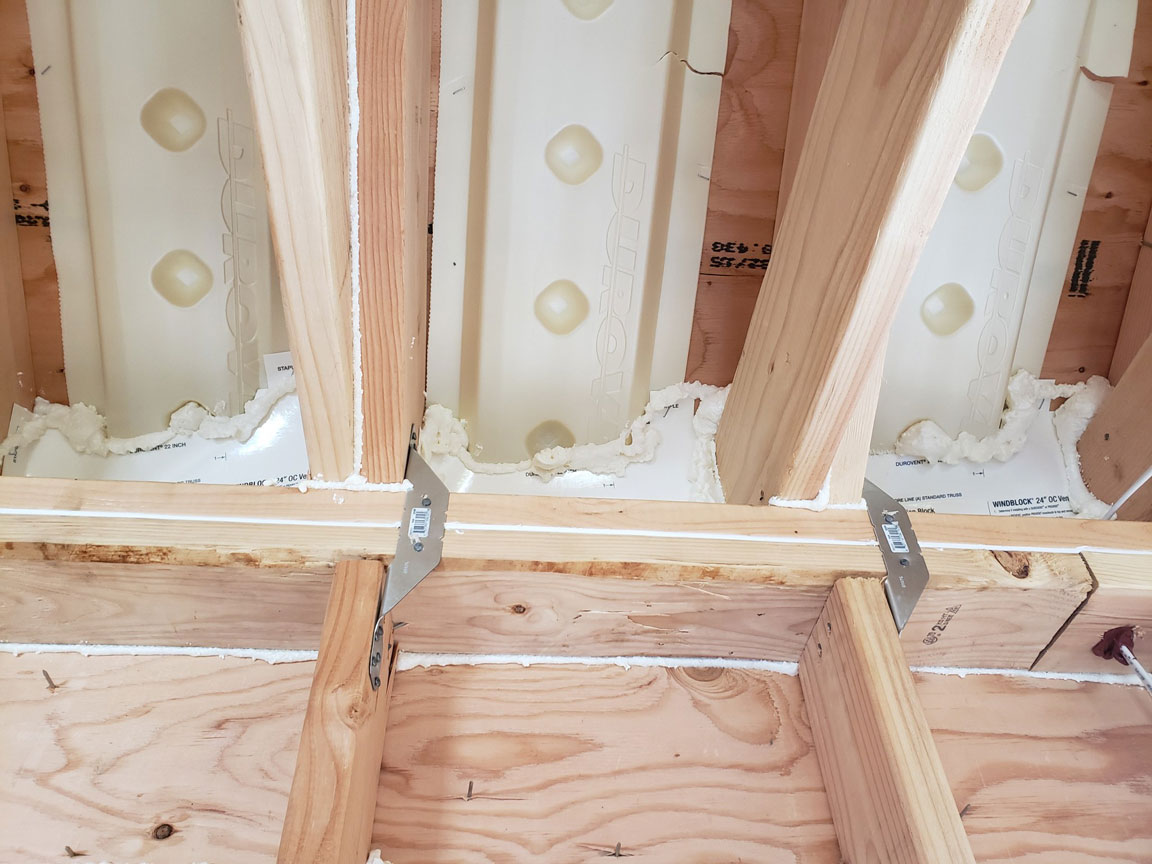Air leakage is one of the primary causes of energy inefficiency and unwanted temperature fluctuations within your home. Properly air sealing your home’s thermal envelope prevents air leakage, maximizing indoor comfort while decreasing energy costs.
Learn More: What Is a Thermal Envelope?
Detecting Air Leaks in Your Home
The best way to detect air leaks in your home is by running a blower door test.
Blower Doors: What Are They and How Do They Work?
A blower door is a powerful fan that a trained energy professional temporarily mounts into the frame of an exterior doorway in your home. After calibrating the device, the fan pulls air out of the house, lowering the air pressure inside. The higher outside air pressure then flows in through all unsealed gaps, cracks and openings such as gaps, cracks, or wiring penetrations. If conditions do not allow for lowering the pressure in the home, the fan may also be operated in reverse, with air pressure increased inside the home.
Radiant Drywall & Insulation can run a blower door test for your home or business, providing you with the information necessary to maximize energy efficiency.
Learn More: Solving Blower Door Issues With Sill Sealer
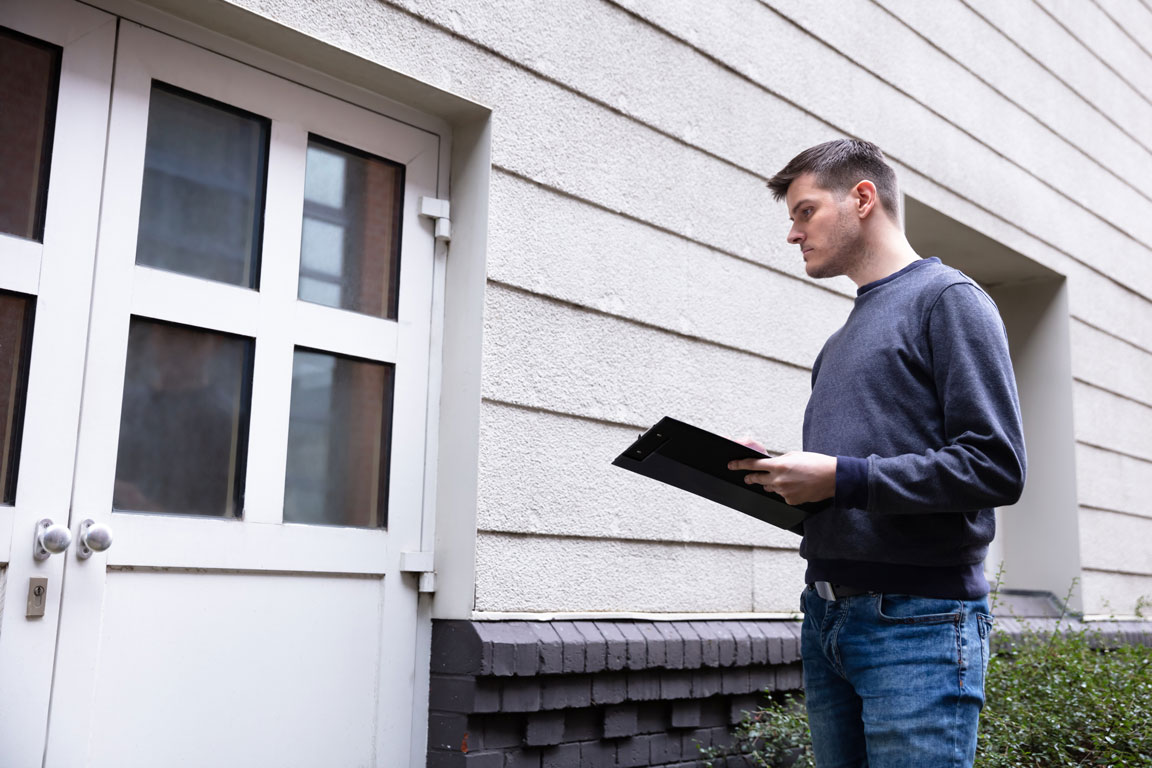
Visual Inspection
On the outside of your house, inspect all areas where two different building materials meet, including:
- All exterior corners
- Outdoor water faucets
- Where siding and chimneys meet
- Areas where the foundation and the bottom of exterior brick or siding meet.
Inside your home, inspect around the following areas for any cracks and gaps that could cause air leaks:
- Electrical outlets
- Switch plates
- Door and window frames
- Electrical and gas service entrances
- Baseboards
- Weather stripping around doors
- Fireplace dampers
- Attic hatches
- Wall- or window-mounted air conditioners.
- Cable TV and phone lines
- Where dryer vents pass through walls
- Vents and fans.
Tips for Sealing Air Leaks
- Hire an energy assessor or other weatherization expert to test your home for air tightness.
- Caulk and weatherstrip doors and windows that leak air.
- Caulk and seal air leaks where plumbing, ducting, or electrical wiring comes through walls, floors, ceilings, and soffits over cabinets.
- Install foam gaskets behind outlet and switch plates on walls.
- Inspect dirty spots on any visual insulation for air leaks and mold. Seal leaks with low-expansion spray foam made for this purpose and install house flashing if needed.
- Look for dirty spots on your ceiling paint and carpet, which may indicate air leaks at interior wall/ceiling joints and wall/floor joists, and caulk them.
- Replace single-pane windows with more efficient double-pane low- emissivity windows. See the Windows section for more information.
- Use foam sealant on larger gaps around windows, baseboards, and other places where air may leak out.
- Check your dryer vent to be sure it is not blocked. This will save energy and may prevent a fire.
- Replace exterior door bottoms and thresholds with ones that have pliable sealing gaskets.
- Keep the fireplace flue damper tightly closed when not in use.
- Seal air leaks around fireplace chimneys, furnaces, and gas-fired water heater vents with fire-resistant materials such as sheet metal or sheetrock and furnace cement caulk.
